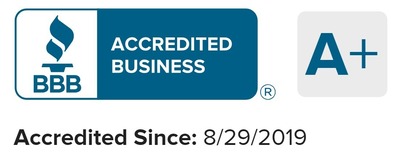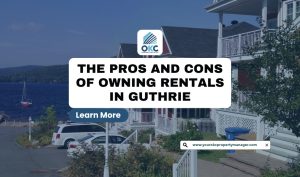Tenant satisfaction is critical for the success of any residential property management business. Happy tenants mean a well-maintained property, fewer complaints, and timely rental payments. According to a survey by Buildium, 65% of tenants consider their relationship with their landlord a critical factor in deciding whether to renew their lease. Keeping tenants satisfied boosts occupancy rates and reduces turnover-related costs, which average between $1,000 and $5,000 per unit.
However, when managing multiple residential units, it’s easy to overlook certain aspects, unintentionally leading to tenant dissatisfaction. Leaving those issues unaddressed escalates, causing bigger challenges.
Recognizing and addressing tenant dissatisfaction early not only helps retain tenants but also enhances your reputation in the competitive rental market. In this article, I’ll talk about 7 common signs of tenant dissatisfaction and actionable strategies with 20+ years of property management experience to resolve them, ensuring tenant satisfaction and safeguarding your investment.
1. Frequent Maintenance Requests Without Resolution
The Problem:
Unresolved maintenance issues are a leading cause of tenant dissatisfaction. Whether it’s a leaking faucet, malfunctioning HVAC system, or broken appliances, research shows that 65% of tenants expect solutions as fast as possible. A repeatedly delayed or inadequate response makes them question the value of their lease and quickly erodes trust with early lease terminations.
The Warning Signs:
- Multiple complaints about the same issue.
- Tenants are expressing frustration in emails or calls.
- Poor online reviews mentioning maintenance delays.
How to Address It:
- Set Up a Well-Organized System: Use property management software to log, track, and prioritize tenants’ maintenance requests.
- Be Transparent: Communicate repair timelines and inform tenants of any delays.
- Invest in Preventative Maintenance: Regular inspections and servicing of major systems prevent recurring problems in the future.
- Partner with Reliable Vendors: Build relationships with professional contractors who provide timely, high-quality service.
Pro Tip: Tenants appreciate follow-ups after repairs. A simple call or email asking if the issue has been resolved earns trust.
2. Declining Property Conditions
The Problem:
When common areas, landscaping, or amenities are neglected, tenants feel undervalued. Poor property upkeep makes tenants second-guess their decision to live there. Moreover, dirty or damaged units lead to health hazards and potential property damage, which affects your property’s long-term value.
The Warning Signs:
- Complaints about cleanliness or safety in shared spaces.
- Visible deterioration, such as peeling paint or broken fixtures.
- Decreased use of amenities like gyms or pools.
How to Address It:
- Regular Inspections: Walk the property weekly or monthly to identify and address problems early.
- Hire a Dedicated Maintenance Team: Ensure you have staff to manage ongoing property upkeep.
- Encourage Feedback: Create open communication channels where tenants can report issues with common areas.
- Upgrade Strategically: Invest in high-impact renovations, such as new flooring in hallways or updated lighting for added security.
3. Poor Communication and Unresponsive Management
The Problem:
When tenants stop communicating, it is a red flag. A lack of communication or delayed responses frustrates your tenants and leads to feelings of unhappiness. Today’s renters expect fast, clear communication, especially during emergencies. Research shows that 30% of tenants move voluntarily when property owners like you fail to maintain consistent communication with them.
The Warning Signs:
- Tenants are complaining about unreturned calls or emails.
- Negative feedback about management’s professionalism.
- Miscommunication regarding policies, such as rent increases or pet rules.
How to Address It:
- Set Clear Communication Protocols: Respond to all tenant inquiries within 24 hours.
- Train Your Team: Equip your property management personnel with conflict resolution and customer service skills.
- Use Technology: Automate routine communications, such as payment reminders or policy updates.
- Be Accessible: Provide multiple contact options (email, phone, chat) and maintain office hours convenient for tenants.
4. Lack of a Sense of Community
The Problem:
Tenants value a sense of belonging. When your properties lack social interaction opportunities, tenants feel isolated, reducing their satisfaction and attachment to the space. Properties with active community engagement programs report an average 20% higher lease renewal rate.
The Warning Signs:
- Low attendance at community events.
- Feedback suggesting tenants don’t know their neighbors.
- High turnover among tenants seeking a “better community feel.”
How to Address It:
- Organize Events: Host seasonal gatherings, workshops, or fitness classes to encourage interaction.
- Create Shared Spaces: Invest in lounges, co-working areas, or outdoor seating to foster connection.
- Survey Tenants: Ask for ideas about activities or amenities that make the property feel more like home.
- Highlight Diversity: Celebrate the unique backgrounds of your tenant base through themed events or recognition programs.
5. Rent Increases Without Justification
The Problem:
While rent increases are necessary, abrupt or unexplained hikes upset tenants and drive them to explore housing options that better align with their budget and expectations. Transparency plays a crucial role here in retaining tenants. Otherwise, it disrupts the landlord-tenant relationship and increases your operational costs associated with marketing, screening, and onboarding new tenants.
The Warning Signs:
- Tenants are questioning or disputing the increase.
- Non-renewals or early lease terminations following a rent hike.
- Complaints about perceived unfairness.
How to Address It:
- Justify the Increase: Explain why rent increases—citing market conditions, increased operating costs, or property improvements.
- Offer Value: Pair increases with tangible benefits, such as upgraded appliances or enhanced security measures.
- Provide Advance Notice: Give tenants at least 60-90 days to adjust their budgets.
- Negotiate Renewals: Offer long-term tenants a smaller increase or perks like free parking to encourage lease renewal.
Pro Tip: Framing rent increases as a reinvestment in the community softens the blow and demonstrates your commitment to tenants.
6. High Tenant Turnover Rates
The Problem:
When more tenants break their leases or choose not to renew them, it’s a red flag for you. These are costly problems of tenant dissatisfaction. A study reveals that 40% of tenants leave due to poor management practices, underscoring the importance of a tenant-centric approach to ensure satisfaction and reduce tenant turnover.
The Warning Signs:
- Frequent Early Lease Terminations
- Short Lease Renewals
- Increased Vacancy Rates.
How to Address It:
- Conduct Exit Interviews: Collect feedback from your departing tenants to identify recurring complaints or patterns.
- Review and Adjust Rental Pricing: Compare your rates with similar properties in the area and justify them with proper reasoning.
- Be Proactive in Communication: Regularly check in with tenants to foster a transparent relationship.
- Address Maintenance Issues Quickly: Implement a 24/7 maintenance request system to resolve problems efficiently.
7. Complaints about Neighbors
A 2020 survey by the National Multifamily Housing Council revealed that 65% of tenants prioritize peace and privacy when choosing a rental property. Ongoing noise complaints, disputes over shared spaces, or concerns about safety makes a tenant feel uncomfortable or unsafe in their environment. If it is left unresolved, these issues lead to tenants moving out or taking legal action against you or property management.
The Warning Signs:
- Allegations of disruptive behavior
- Requests to move units or terminate leases
- Complaints about parking violations.
How to Address It
- Set Clear Policies: Include noise restrictions, pet policies, and other guidelines in the lease agreement.
- Mediating Conflicts: Facilitate a neutral discussion to resolve misunderstandings or conflicts.
- Encourage Community Building: Organize events like BBQs or holiday gatherings to foster positive relationships among tenants.
- Invest in Security Measures: Adding cameras or increasing patrols address their safety concerns and foster a sense of trust.
[Keep learning: Learn how tenant retention can save you thousands addressing tenant dissatsfaction]
Final Thoughts
Tenant satisfaction is a win-win for both landlords and tenants. By addressing tenant dissatisfaction with vigilance and proactive management, you are enhancing your property’s reputation and also positioning your property as a preferred choice in a competitive market while building trust and loyalty.
If you’re looking for professional assistance in managing your property or addressing tenant issues, OKC Home Realty Services is here to help. Our professional property management services are designed to maximize tenant retention, protect your investment, and reduce your workload. Contact us today to learn how we can transform your property management experience.

Author
Scott Nachatilo is an investor, property manager and owner of OKC Home Realty Services – one of the best property management companies in Oklahoma City. His mission is to help landlords and real estate investors to manage their property in Oklahoma.
 (
(









